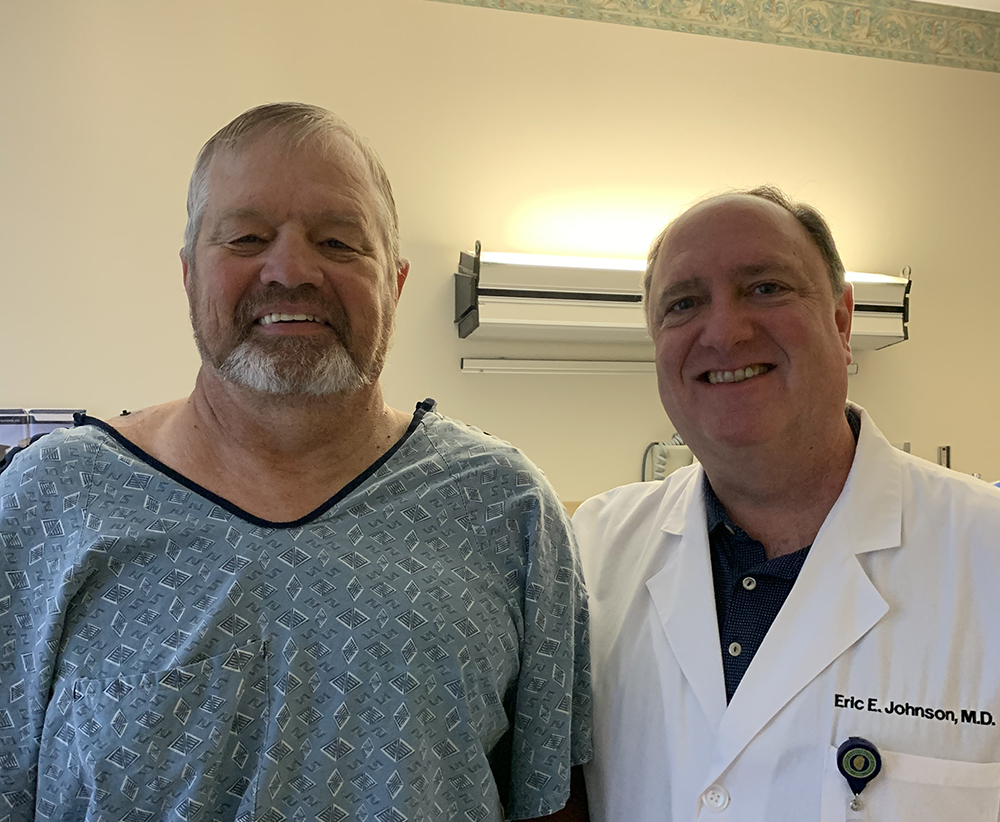First Tennessee Patient Receives Wireless Heart Failure Device at Baptist Memphis

Electrophysiologist Implants Heart Failure Device in Patient at Baptist Heart Institute
A wireless device may give new hope to some cardiac patients. Instead of using traditional pacemakers with wires — decades-old technology with well-documented problems — a new system uses a small, wireless electrode the size of a grain of rice to pace the heart, or help it beat in a regular pattern at a regular pace.
This new device, developed by EBR Systems, is called the WiSE CRT System. It uses cardiac resynchronization therapy (CRT) to provide a more customized, patient-specific solution and is being studied in Tennessee and in a larger clinical trial, called SOLVE CRT, to assess its safety and effectiveness in patients whose hearts have not responded to traditional pacemakers or CRT devices. Dr. Eric Johnson, electrophysiologist at Stern Cardiovascular, implanted the first device in Tennessee on July 23, 2019, at the Baptist Heart Institute at Baptist Memorial Hospital-Memphis.
“Stern Cardiovascular and Baptist Memorial Health Care are excited to participate in this trial,” said Brian Dragutsky, director of clinical research at Stern Cardiovascular. “We hope to confirm earlier study results and validate WiSE CRT’s potential for patients who have limited treatment options.”
About Heart Failure and Cardiac Resynchronization Therapy
Without therapy, many people with heart failure deteriorate and eventually die. Cardiac resynchronization therapy is a method that improves symptoms and reduces mortality by electrically stimulating the heart.
“Traditional CRT uses wire leads to synchronize the left and the right ventricles so that the two chambers beat together,” said Dragutsky. “This improves the heart’s efficiency.”
Unfortunately, studies show 32%–43% of patients implanted with a traditional CRT device are non-responders at six months.
“These patients are not getting the improvement in quality of life, exercise capacity and cardiac function that we would expect with the implant of a CRT device,” said Dragutsky. “With the implant of the WiSE CRT System, there is the expectation that the patient will become a responder because electrophysiologists have more control when locating the device inside the left ventricle.”
Use of the WiSE CRT System carries many of the same risks associated with the use of any commercially available CRT system, such as pain, allergic reactions or high-rate ventricular pacing.
A Promising Therapy for Patients
Benny Jones received the first WiSE CRT System device implant in Tennessee. Jones resides in Hamilton, Mississippi, and traveled to the Baptist Heart Institute to undergo the procedure to receive the leading-edge technology.
“I hope my participation helps enable many deserving patients to receive the life-changing therapy,” said Jones.
Ultrasound now transfers energy from the new type of pacemaker through Jones’ body to the special receiver electrophysiologists placed inside the left ventricle of his heart. The receiver uses ultrasound energy to pace Jones’ heart without using pacing leads. Researchers will monitor Jones for cardiovascular improvement.
The study, which is expected to complete enrollment in mid-2020, will include up to 350 randomized participants worldwide.
“This clinical trial is significant,” said Dragutsky. “There are minimal alternatives for patients that are non-responders or who have failed implants. We hope the current study leads to support and approval from the U.S. Food and Drug Administration so more qualifying patients in our community have access to this promising therapy.”
To learn about heart and vascular services at Baptist, visit our cardiovascular page. Find a doctor by visiting our Find a Doctor page. Learn more about clinical research at Stern Cardiovascular.
